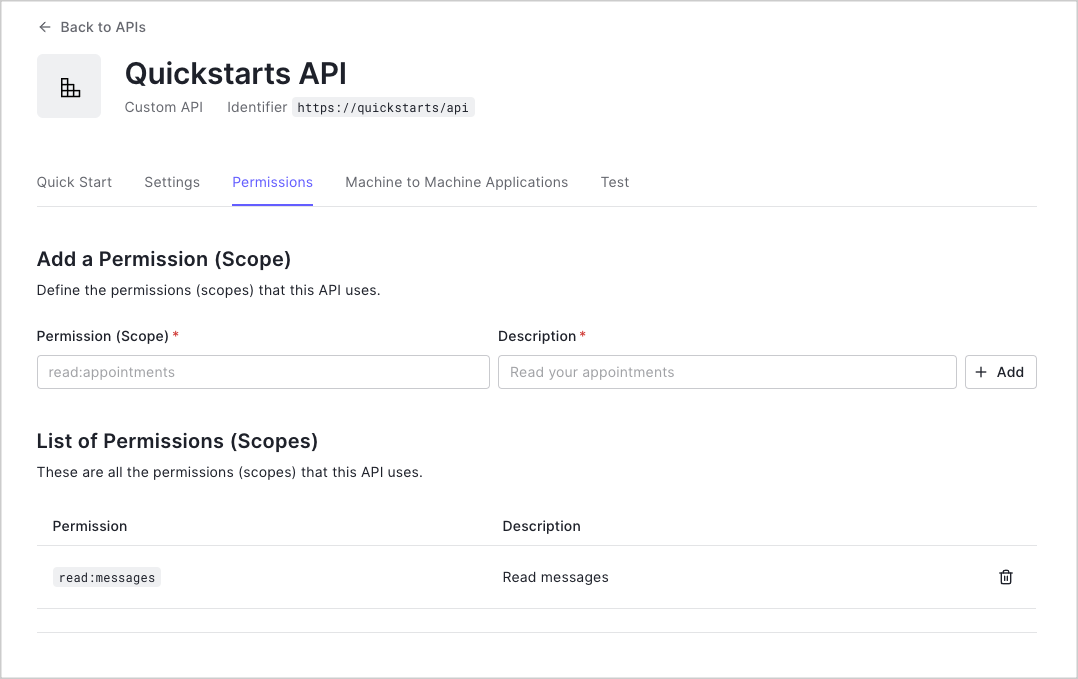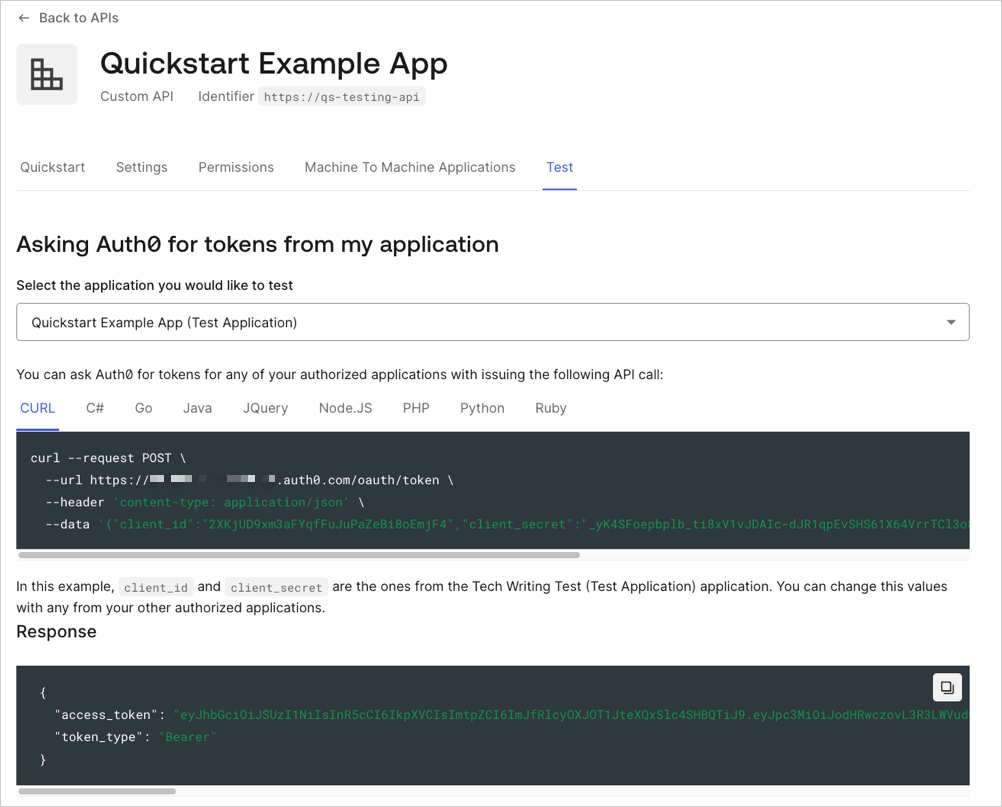This guide demonstrates how to integrate Auth0 with any new or existing Go API application using the go-jwt-middleware
package.If you have not created an API in your Auth0 dashboard yet, use the interactive selector to create a new Auth0 API
or select an existing API for your project.To set up your first API through the Auth0 dashboard, review our getting started guide.Each Auth0 API uses the API Identifier, which your application needs to validate the access token.
New to Auth0? Learn how Auth0 works and
read about implementing API authentication and
authorization using the OAuth 2.0 framework.
1
Define permissions
Permissions let you define how resources can be accessed on behalf of the user with a given access token. For
example, you might choose to grant read access to the 
messages resource if users have the manager
access level, and a write access to that resource if they have the administrator access level.You can define allowed permissions in the Permissions view of the Auth0 Dashboard’s APIs section. The following
example uses the read:messages scope.
2
Install dependencies
Add a Download dependencies by running the following shell command:
go.mod file to list all the necessary dependencies.3
Configure your application
Create a
.env file within the root of your project directory to store the app configuration. Then,
fill in the environment variables:To configure this snippet4
Create a middleware to validate access tokens
The
EnsureValidToken middleware function validates the access token. You can apply this function to
any endpoints you wish to protect. If the token is valid, the endpoint releases the resources. If the token is not
valid, the API returns a 401 Authorization error.Set up the go-jwt-middleware middleware to verify access tokens from incoming requests.By default, your API will be set up to use RS256 as the algorithm for signing tokens. Since RS256 works by using
a private/public keypair, tokens can be verified against the public key for your Auth0 account. This public key is
accessible at https://dev-gja8kxz4ndtex3rq.us.auth0.com/.well-known/jwks.json.Include a mechanism to check that the token has sufficient scope to access the requested resources.Create a function HasScope to check and ensure the access token has the correct scope before
returning a successful response.5
Protect API endpoints
In this example, create an  Provide the Access Token as an
Provide the Access Token as an
/api/public endpoint that does not use the EnsureToken
middleware as it is accessible to non-authenticated requests.Create an /api/private endpoint that requires the EnsureToken middleware as it is only
available to authenticated requests containing an access token with no additional scope.Create an /api/private-scoped endpoint that requires the EnsureToken middleware and
HasScope as it is only available for authenticated requests containing an access token with the
read:messages scope granted.Only the
read:messages scope is checked by the HasScope function. You may
want to extend it or make it a standalone middleware that accepts multiple scopes to fit your use case.Make a Call to Your API
To make calls to your API, you need an Access Token. You can get an Access Token for testing purposes from the Test view in your API settings.
Authorization header in your requests.Checkpoint
Now that you have configured your application, run your application and verify that:GET /api/publicis available for non-authenticated requests.GET /api/privateis available for authenticated requests.GET /api/private-scopedis available for authenticated requests containing an access token with theread:messagesscope.
Next Steps
Excellent work! If you made it this far, you should now have login, logout, and user profile information running in your application.This concludes our quickstart tutorial, but there is so much more to explore. To learn more about what you can do with Auth0, check out:- Auth0 Dashboard - Learn how to configure and manage your Auth0 tenant and applications
- go-jwt-middleware SDK - Explore the SDK used in this tutorial more fully
- Auth0 Marketplace - Discover integrations you can enable to extend Auth0’s functionality

